Rocket science is not just about optimising fuel, combustion and thrust generation in a rocket engine: rocket plumes require significant study and are just as scientifically captivating as they are visually. Rocket plumes are unique in that they are the only direct anthropogenic emissions at high altitudes and in particular in the ozone layer. ESA has initiated studies but the issue of the quantification of atmospheric impact is complex, requiring a complete knowledge of the aerothermodynamics of rocket plumes including combustion, expansion in the nozzle and development in the atmosphere. Flight experiments are difficult and costly while for an accurate computational representation the small scale plume must then be integrated into relatively large scale climate models without loss in fidelity.
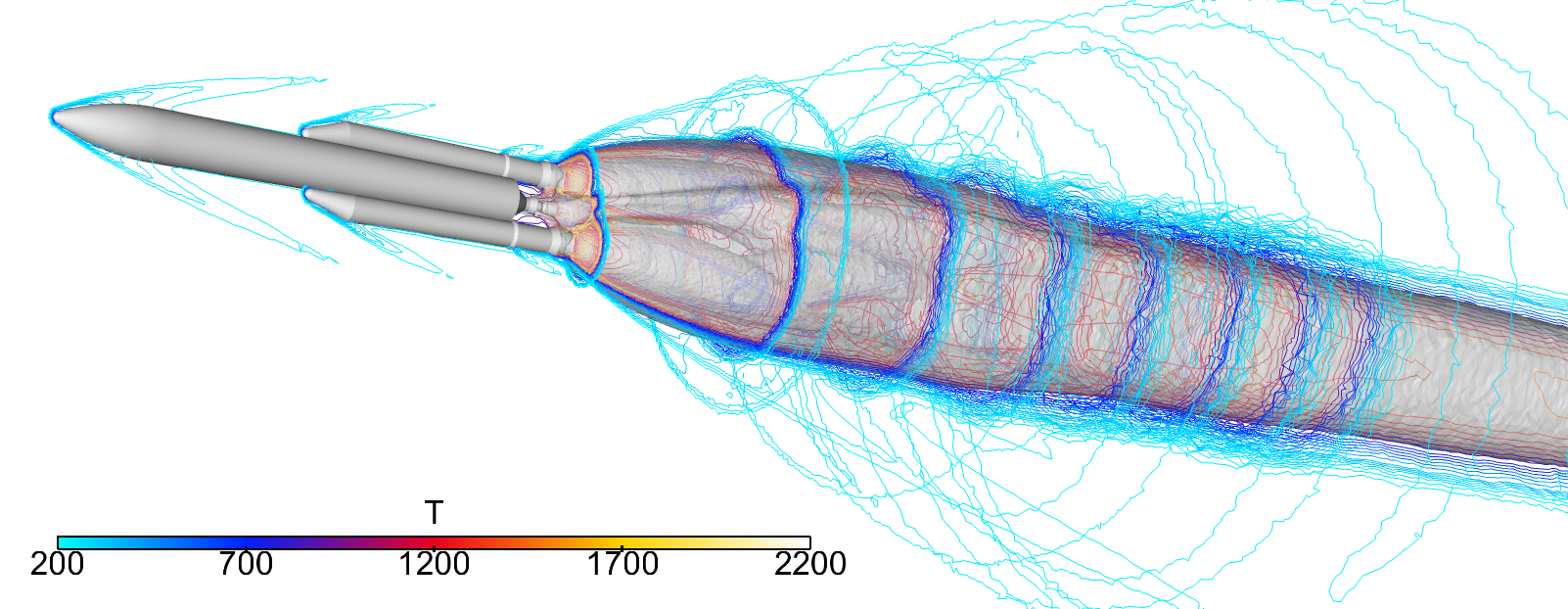
Isolines of temperature surrounding Ariane 5 and its plume. Computed by Onera using the CEDRE CFD code
What happens in a plume depends on a number of factors: firstly a rocket nozzle is designed to optimise its thrust. To do this the nozzle must expand the high pressure combusted fuel to a low pressure exhaust at its exit plane – the maximum thrust is reached when the nozzle expands the combustion gases to the same pressure as the atmosphere outside the nozzle. Since the pressure in the atmosphere decreases dramatically for most of the launch the pressure at the nozzle exit is either higher or lower than the atmospheric pressure. This leads to an interesting phenomenon in the nozzle exit region plume. Since the plume is travelling at supersonic speeds relative to the external atmosphere the difference in pressure produces shockwaves and expansion waves which in turn form areas of afterburning combustion in the plume.
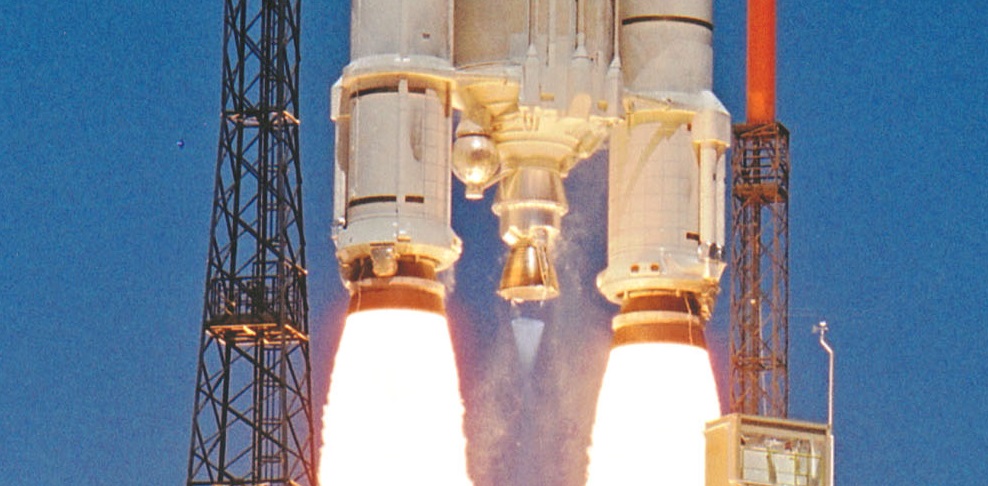
Ariane 5 Rockets with shock diamond visible in plume of Main engine (Centre)
The general shape of the plume also is affected by the atmosphere. At low altitudes the plume is compact but as the altitude increases the plume gets wider and wider. Interestingly, in space when small thrusters are used to re-orientate or maneouver a spacecraft the plume is so wide that significant work is required to ensure that the plume does not contaminate optical surfaces etc. Not only is altitude (and hence atmospheric pressure) influencing the shape but winds and eddies in the atmosphere change the rate at which the plume expands or mixes with the atmosphere. Most of the chlorine in a solid rock booster plume is in the form of CL2 but sunlight converts this to Cl which is a very efficient ozone depleter. The impact of night and day launches was therefore a question posed during recent studies.
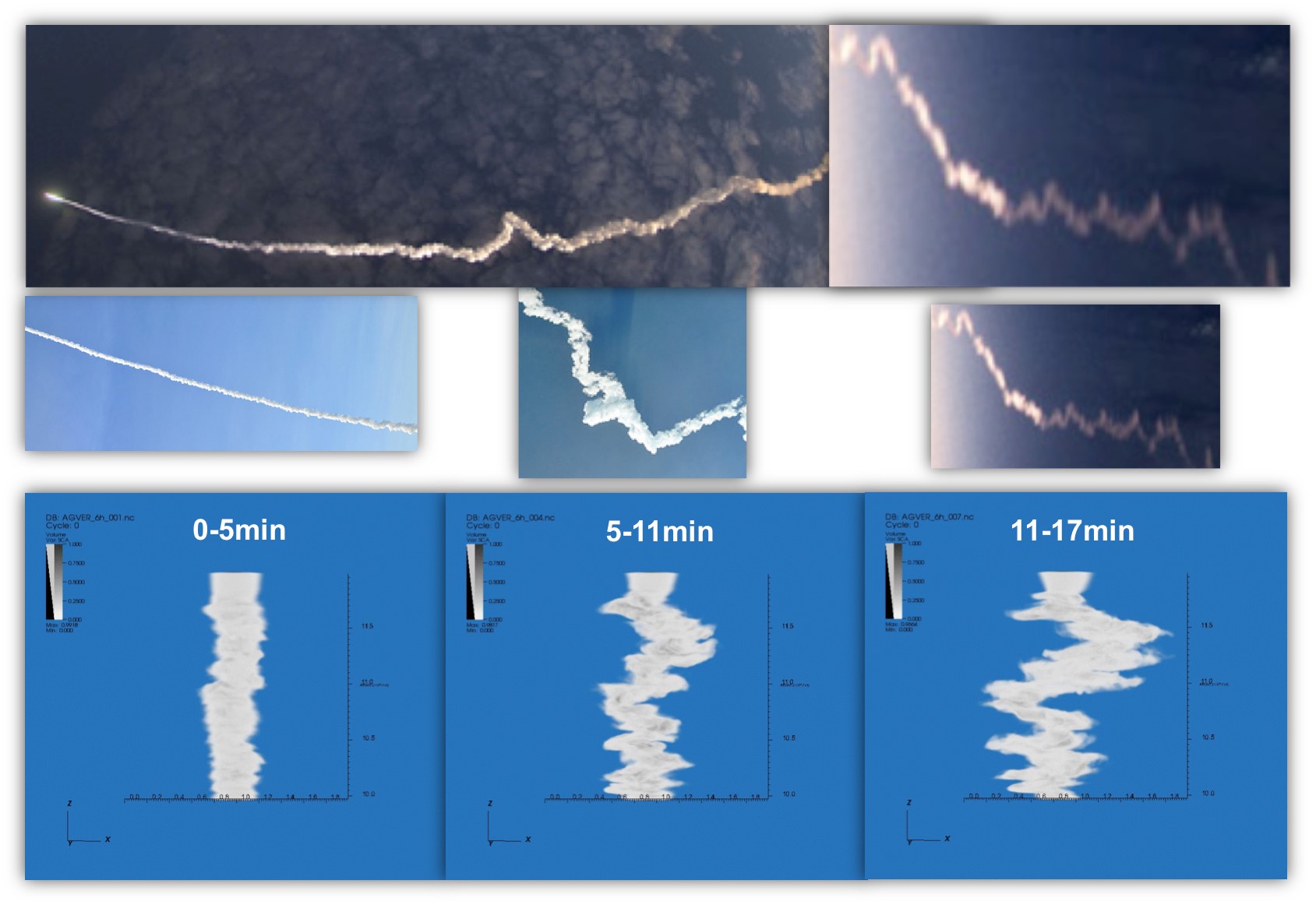
Evolution of far field plumes. Middle and top rows: photographs of rocket plumes of different ages, from young plumes (left) to old ones (right). Bottom row: simulations of a time evolving rocket plume using the 3D mesoscale atmospheric model MesoNH in LESmode
Studies conducted by partners including CERFACS, DLR, FMI, Imperial College, IUP & ONERA have provided ESA with significant insight into the impact of ESA launcher plumes on the atmosphere. These studies have introduced small scale plumes into global climate models using two methods: utilising subgrid models and transient development of the plume to climate model grid scales. Both methods have required particular development for this application. Thus far the results have shown that the impact of gaseous species such HCL and CO2 are consistent with previous studies however thanks to these studies we now have evidence of a chemical reaction at the surface of exhaust alumina particles that converts inactive chlorine species, especially HCl, into chlorine radicals.
So whats next? A flight test through an ESA plume to verify our computations…..
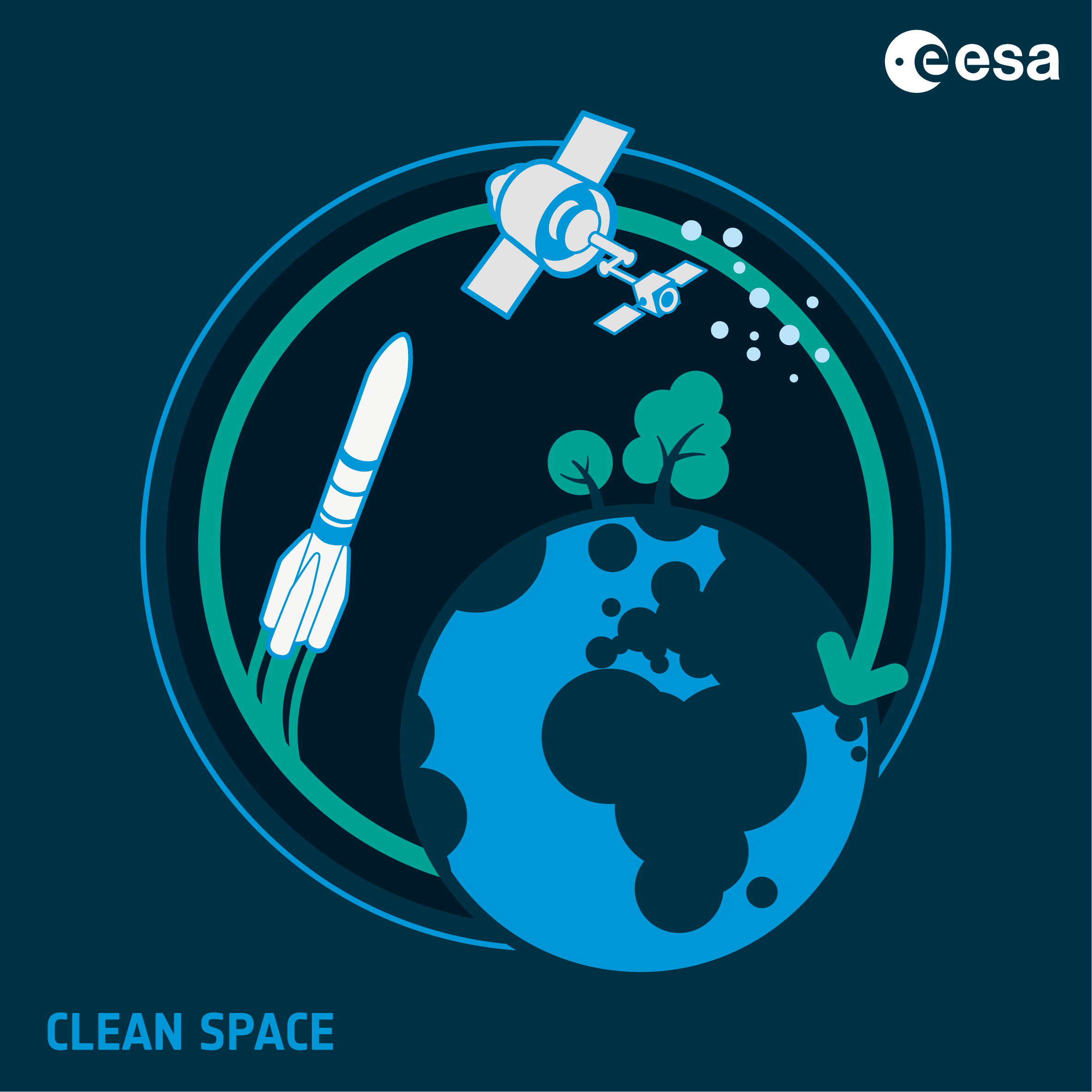

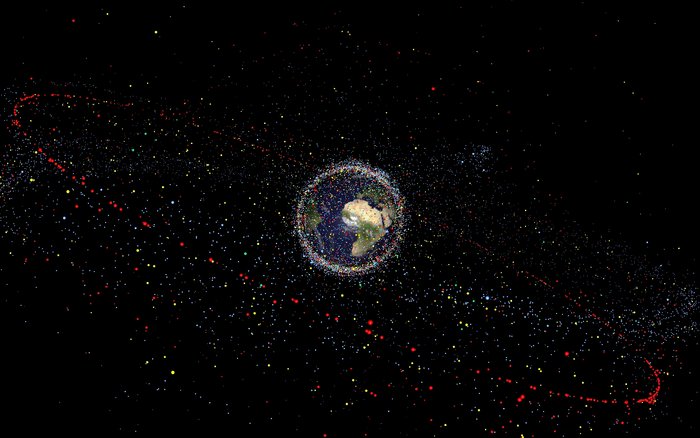
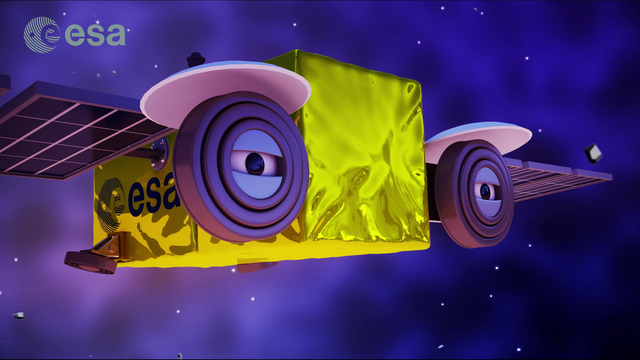
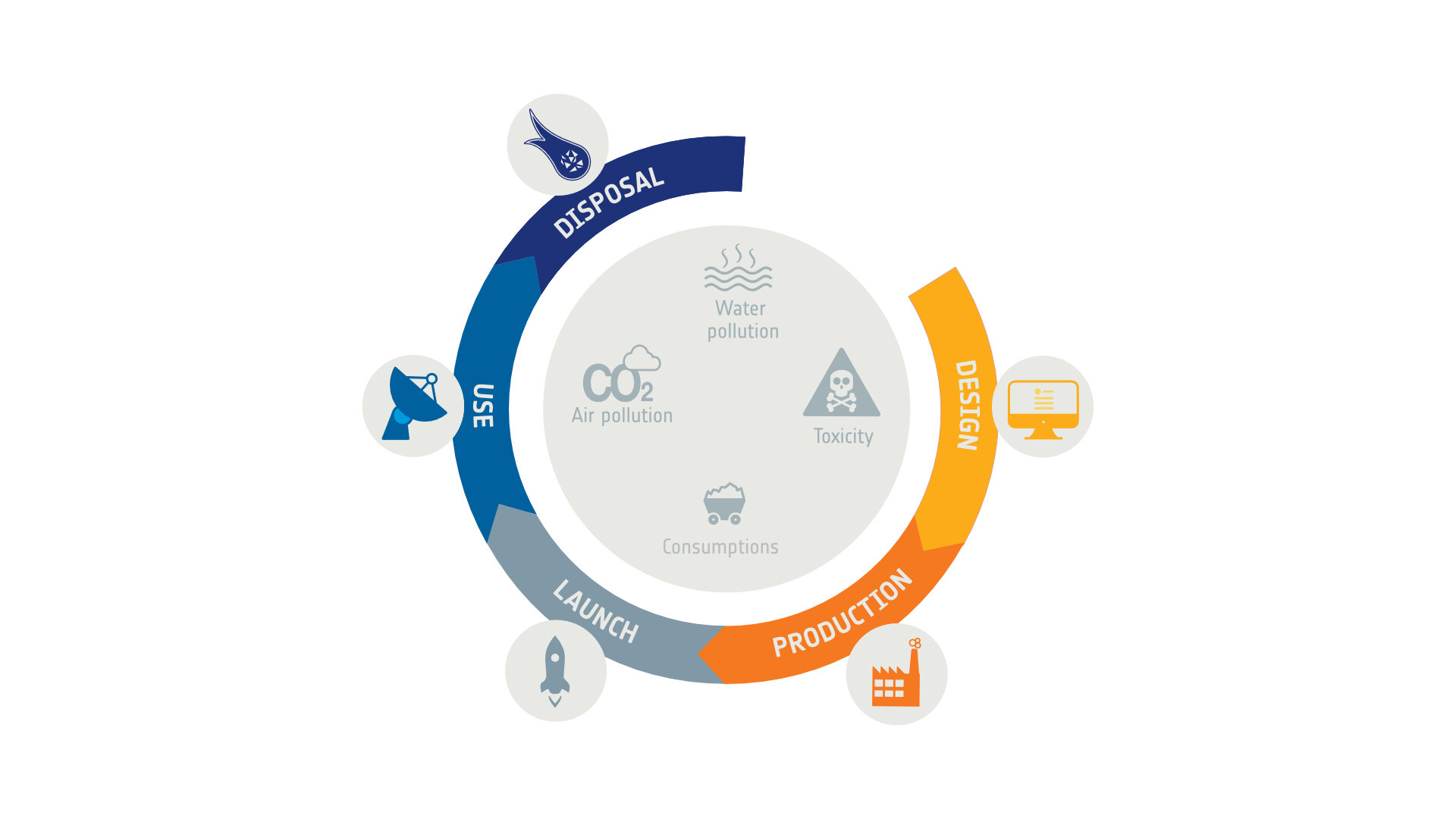
Discussion: 2 comments
I piloted a pa-44 aircraft thru an rocket exhaust plume at Vandenberg AFB on December sixth 1995. The study was performed using the PA-44 belonging to F.I.T. Aviation in Melbourne Florida. I do not know who the other contractors involved were. I entered the plume immediately after the rocket left the launch tower at about 1000′ AGL and turned back and forth through the plume at all altitudes until no visible plume could be seen. A 2.5 hour flight. The unknown contractors had onboard measuring devices with an computer operator taking in the data. I cannot find record of this flight any where.
Have you ever noticed the shape of the plume a rocket has and how it changes due to atmospheric density? The plumes shape is a direct relationship to the surrounding AIR. As the air density pushes back against the plume from the sides and flame front, this in turn effects the internal pressure of the reaction chamber inside the rocket. So as the air density decreases the plume changes shape from a linear plume to an under-expanded plume that shows an inefficient operation and lack of pressure results, and this is countered with a different nozzle shape to confine the plume to provide more back pressure to keep the rocket from de-igniting and this is not optimal as re-igniting is usually catastrophic. The operating pressure inside a reaction chamber is only around 1200-1400psi so an ignition that creates a pressure substantially greater than that will cause Columbia failure, Columbia never had any crew BTW.
So now we know that a rocket has limits and space is definitely off limits to an inefficient heat motor. You cannot operate a device in space that requires pressure, as all pressure in space is negated therefore the rocket is doomed by lack of external back pressure and will never be able to pressurize its reaction chamber to form thrust.
In the absence of external pressure, there would be no force acting to increase the pressure within a system.